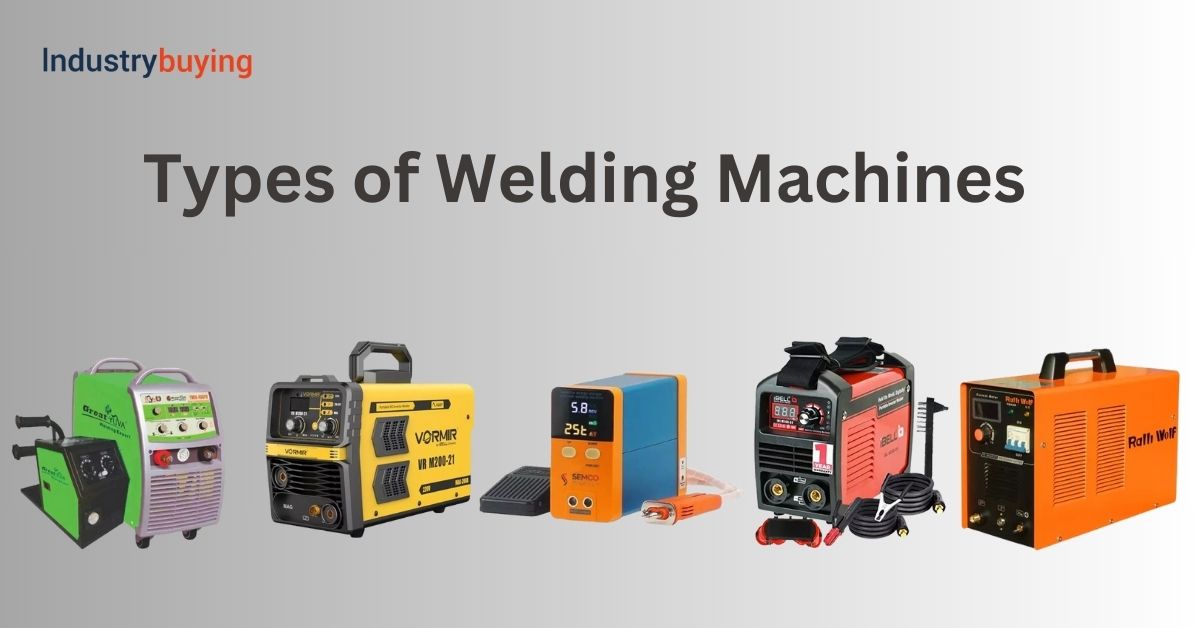How to Choose a Perfect Welding Machine?
Last Updated on October 10, 2024
Welding Machine Overview
The world of welding is fascinating—especially, to a DIY enthusiast or an aspiring welder who has just begun to learn the trade—with its wide range of products and accessories available for use on the market. There is a wide assortment of welding accessories that can be selected—ranging from MIG welders, TIG welders and stick welders all the way to oxyacetylene welders. There are also several other high-end welding machines that are relatively more expensive in comparison with the more common TIG and MIG ones; these high-end welding machines are, however, often driven by fuel-fed engines in order for them to be used off the electric grid with equal convenience.
If you are an aspiring welder, it would best if you understood the different types of welding equipment to better your prospects for employment. If you are able to decide on which welding model would be more compatible for a particular project, you’d better your chances of being appointed as a supervisor or project assistant by an employer.
List of Top 5 Tips to Choose the Best Welding Machine
Just check these below written free tips and tricks to choose the best welding machine according to your requirements from Industrybuying.
#1)Assess the nature of the metal
Usually, welding is done only on carbon steel. Carbon steel has the ability to handle the excess heat that any novice welder might accidentally apply to the metal. It is, thus, compatible with a majority of the welding machines available for use. Stainless steel is well suited for storing beverage or edible items because of its ability to resist corrosion.
It is fully compatible with TIG or MIG welding machine and does not require as much amperage to operate as does carbon steel when being welded. Aluminium needs an almost uniform supply of heat to keep the weld pool from drying out owing to its high heat-conductive capacity. However, the high input of heat often results in deformation of the workpiece.
Thus aluminium requires more complex welding machines, such as MIG machine equipped with the ability to perform pulse welding, in order to be conjoined optimally well. A better choice for welding aluminium would a high-end TIG welding machine. It would be, thus, best that you assess the metal that you wish to conjoin before selecting a welding machine.
#2)Establish the ideal amperage
The cost of a welding machine is dependent on current it can generate; thicker metals usually require more current in order for them to be welded properly. It is thus best that you pay ample attention to the thickness of the fixtures as well as the base metals you’d be required to work with for a project.
Like thick structural steel and a pipe having a thickness greater than half an inch; you would require either a stick welding machine or a high-end MIG welding machine to weld these effectively.
To weld thin metals, on the contrary, you would require more sensitive welding machines which would provide just the right amount of heat to form the weld. In this respect, welding aluminium becomes almost the same as does welding a relatively thinner metal.
#3)Choose an ideal site for welding
The site where you’d be performing the welding also helps in arriving at a suitable welding machine. When welding indoors you could plug in your machine to 115 volt AC machine, a 220-240 volts AC supply. A 115 volt supply is the regular supply that any commercial or domestic facility receives. Most elementary welding machines operate at this voltage. The machine could work in single-phase or work as a three-phase device.
#4)Refer to the specs sheet
Referring to the specs sheet can help you understand several things critical to differentiating a good welding machine from another. For instance, a specs sheet can help you gauge how much of continuous welding a machine can perform in a span of ten minutes. Duty cycle is representative of the number of minutes that you can weld per a standard interval of ten minutes. Exceeding the duty cycle may heat up the machine, damaging its internal circuitry.
#5)Analyze compressed-gas requirements, if any
Different welding processes call for the use of different compressed gases. Oxygen, argon and carbon dioxide are the most popularly used compressed gases across several welding procedures.
You could source your welding machines from leading manufacturers such as Esab, Ador Welding, Cruxweld, Rexel and Roteck, to name a few.


